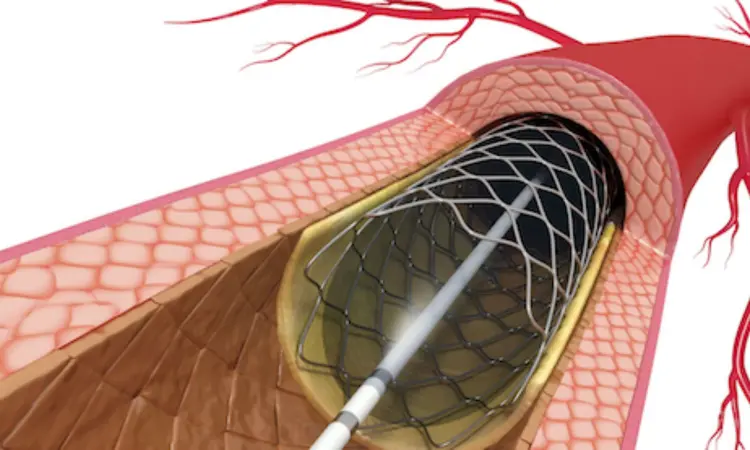- Home
- Medical news & Guidelines
- Anesthesiology
- Cardiology and CTVS
- Critical Care
- Dentistry
- Dermatology
- Diabetes and Endocrinology
- ENT
- Gastroenterology
- Medicine
- Nephrology
- Neurology
- Obstretics-Gynaecology
- Oncology
- Ophthalmology
- Orthopaedics
- Pediatrics-Neonatology
- Psychiatry
- Pulmonology
- Radiology
- Surgery
- Urology
- Laboratory Medicine
- Diet
- Nursing
- Paramedical
- Physiotherapy
- Health news
- Fact Check
- Bone Health Fact Check
- Brain Health Fact Check
- Cancer Related Fact Check
- Child Care Fact Check
- Dental and oral health fact check
- Diabetes and metabolic health fact check
- Diet and Nutrition Fact Check
- Eye and ENT Care Fact Check
- Fitness fact check
- Gut health fact check
- Heart health fact check
- Kidney health fact check
- Medical education fact check
- Men's health fact check
- Respiratory fact check
- Skin and hair care fact check
- Vaccine and Immunization fact check
- Women's health fact check
- AYUSH
- State News
- Andaman and Nicobar Islands
- Andhra Pradesh
- Arunachal Pradesh
- Assam
- Bihar
- Chandigarh
- Chattisgarh
- Dadra and Nagar Haveli
- Daman and Diu
- Delhi
- Goa
- Gujarat
- Haryana
- Himachal Pradesh
- Jammu & Kashmir
- Jharkhand
- Karnataka
- Kerala
- Ladakh
- Lakshadweep
- Madhya Pradesh
- Maharashtra
- Manipur
- Meghalaya
- Mizoram
- Nagaland
- Odisha
- Puducherry
- Punjab
- Rajasthan
- Sikkim
- Tamil Nadu
- Telangana
- Tripura
- Uttar Pradesh
- Uttrakhand
- West Bengal
- Medical Education
- Industry
FFR following PCI tied to less angina and better quality of life: Analysis of TARGET-FFR study

UK: Larger improvements in fractional flow reserve (FFR) after PCI (percutaneous coronary intervention) are linked with more relief from angina and better quality of life, an analysis of the TARGET-FFR study has revealed. The study also showed that patients with more-severe physiologic lesions before PCI tend to get more symptomatic relief from the procedure.
According to the researchers, intracoronary physiologic assessments can help inform patient expectations about PCI benefits. They may even be used to take the patient off the table if FFR indicates that a stent placement won't help their symptoms. Explaining why FFR is being used at the outset helps manage patient expectations.
Angina affects twenty percent to 40% of patients after percutaneous coronary intervention, which is linked with depression, anxiety, reduced quality of life, and impaired physical function. Understanding procedural and patient factors associated with post-PCI angina may inform alternative approaches to treatment.
In their study published in Circulation: Cardiovascular Interventions, Damien Collison, Golden Jubilee National Hospital, Clydebank, United Kingdom, and colleagues aimed to identify different patient and procedural predictors of angina after PCI.
The analysis included two hundred thirty patients undergoing PCI who completed the European quality of life–5 dimension–5 level (EQ-5D-5L) questionnaires and the Seattle Angina Questionnaire (SAQ-7) at baseline and three months post-PCI.
Before and after stenting, patients received blinded intracoronary physiology assessments. A post hoc analysis of the TARGET-FFR trial was performed to compare clinical and procedural characteristics in patients with and without post-PCI angina, defined by follow-up SAQ-angina frequency score <100.
The study led to the following findings:
· Eighty-eight of 230 patients reported angina three months post-PCI and had a higher incidence of active smoking, atrial fibrillation, and previous myocardial infarction or PCI history.
· Compared with patients with no angina at follow-up, they had lower baseline SAQ summary scores (69.48±24.12 versus 50.20±22.59) and EQ-5D-5L health index scores (0.84±0.15 versus 0.69±0.22).
· Pre-PCI fractional flow reserve (FFR) was lower among patients with no post-PCI angina (0.56±0.15 versus 0.62±0.13).
· Percentage change in FFR after PCI had a moderate correlation with angina frequency score at follow-up (r=0.36).
· Patients with post-PCI angina had less improvement in FFR (43.1±33.5% versus 67.0±50.7%).
· There were no between-group differences in post-PCI FFR, coronary flow reserve, or corrected index of microcirculatory resistance.
· Patients with post-PCI angina had lower SAQ-summary scores (64.01±22 versus 95.16±8.72) and EQ-5D-5L index scores (0.69±0.26 versus 0.91±0.17) at follow-up.
The researchers wrote, "Larger improvements in FFR after PCI are associated with better quality of life and less angina at follow-up."
"Intracoronary physiology assessment in patients with stable symptoms can inform expectations of angina relief and quality of life improvement after stenting and thereby help to determine PCI's appropriateness."
Reference:
The "Angina After Percutaneous Coronary Intervention: Patient and Procedural Predictors" study was published in Circulation: Cardiovascular Interventions. DOI: https://doi.org/10.1161/CIRCINTERVENTIONS.122.012511
Dr Kamal Kant Kohli-MBBS, DTCD- a chest specialist with more than 30 years of practice and a flair for writing clinical articles, Dr Kamal Kant Kohli joined Medical Dialogues as a Chief Editor of Medical News. Besides writing articles, as an editor, he proofreads and verifies all the medical content published on Medical Dialogues including those coming from journals, studies,medical conferences,guidelines etc. Email: drkohli@medicaldialogues.in. Contact no. 011-43720751


